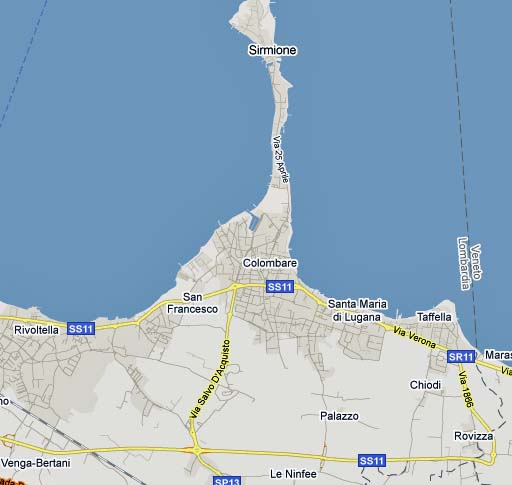historical information
sirmione
my
hotel
This is the Benaco peninsula at the southernmost end of Lake Garda of which at its northern most tip is Catullus’s grottos, that are in fact ruins from a Roman villa with no proven evidence of any connection with the great poet (Gaius Valerius Catullus 87-54 bce) for he was long dead before its building by several hundred years. Also within the town is the Scala family castle with its wonderful views over the lake. The small park like area of the grottos is entwined with avenues with fertile olive trees, cypresses, laurel bushes and magnolias. The historic center is a delight with narrow streets, aristocratic houses and small piazzas, but year around packed with tourists.
The name Sirmione describes the whole area, but in reality is three town areas: the town center at the end of the peninsula, Lugana and Colombare are at the entrance to the causeway like road to the castle. All three towns have their own center but are within a few kilometers of each other and are an easy walk from one to the other.
The castle complex, built starting from 1277 by Mastino della Scala, presents an architectural technology which is analogous to the coeval Della Scala fortresses in the Verona territory, as regards the presence of Ghibelline swallowed merlons and the building technique of curtain–walls in stone and river pebbles alternating with two horizontal bands of bricks courses. The finishing touches of the inside wall linings too, with graffitied plaster simulating regular blocks of stone, are reminiscent of Venetian models. Placed in a strategic position at the entrance to the village at the greatest narrowing of the peninsula, it is completely surrounded by a moat and is a fortress with a complex bulwark containing two drawbridges. It is entered via a covered way leading to the keep, in which there is a room with a wooden ceiling and bare beams leading to the central courtyard, surrounded by tall curtain–walls with three corner towers. Particularly fascinating is the quadrangular dock, preceded by a small courtyard and defended, near the lake, by two towers with walkways. The military function of the building was used for defensive purposes from the time when it was built until the Napoleonic epoch. Since 1976, when the Ministry for the Central Heritage was created, the fortress has been administered by the superintendence for the Architectural and Landscape Heritage for the provinces of Brescia, Cremona and Montova.
the castle

